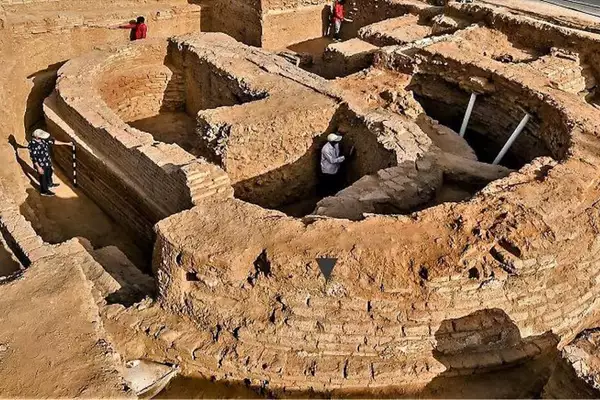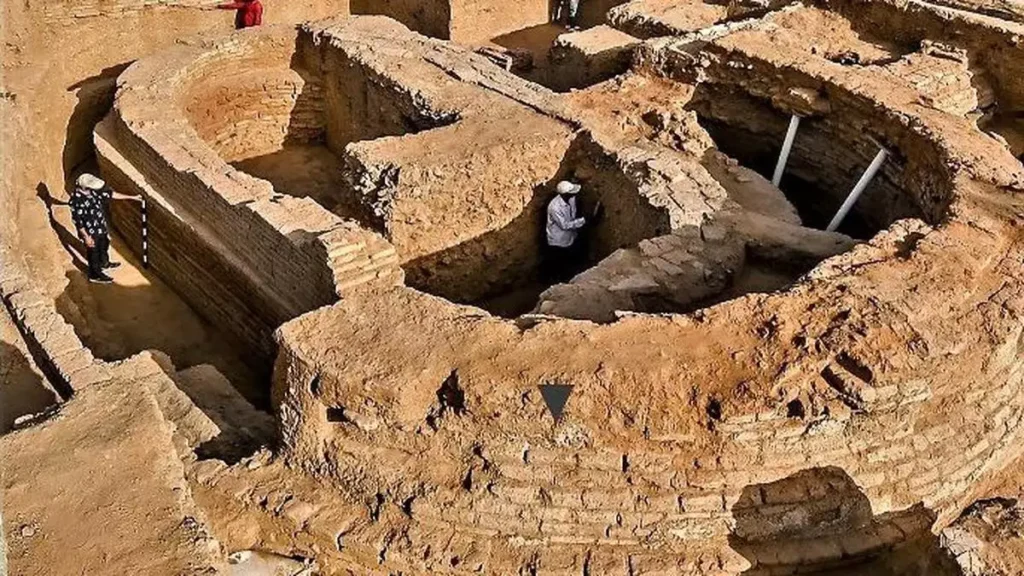A joint study by IIT Kharagpur reveals evidence of cultural continuity in Vadnagar, the oldest living city of India, challenging the notion of a “Dark Age” after the collapse of the Harappan civilization.
Findings of archaeological excavation:
- Archaeological excavations at Vadnagar, led by the Archaeological Survey of India (ASI), suggest the existence of a human settlement dating back to 800 BCE, contemporary to the late-Vedic/pre-Buddhist Mahajanapadas or oligarchic republics.
- The study indicates that the rise and fall of different kingdoms during the 3,000-year period and recurrent invasions of India by central Asian warriors were driven by severe change in climate like rainfall or droughts.
- The excavation was spearheaded by the Archaeological Survey of India (ASI), while the study received funding from the Directorate of Archaeology and Museums, under the Government of Gujarat.
- The latter is responsible for constructing India’s inaugural experiential digital museum in Vadnagar.
History of Vadnagar:
- Vadnagar was a multicultural and multireligious (Buddhist, Hindu, Jain and Islamic) settlement.
- Excavations conducted in numerous deep trenches unveiled the presence of seven cultural stages (periods) in Vadnagar.
- These stages include:
- The Mauryan period
- Indo-Greek period
- Indo-Scythian or Shaka-Kshatrapas period (descendants of provincial governors of ancient Achaemenid Empires)
- Hindu-Solankis period
- Sultanate-Mughal (Islamic) period
- Gaekwad-British colonial rule
- City’s contemporary existence
- One of the oldest Buddhist monasteries was discovered during excavation.
- The excavation uncovered a treasure trove of artefacts, including potteries, copper, gold, silver, iron objects, intricately designed bangles, and coin moulds the Greek king Appollodatus during the Indo-Greek rule at Vadnagar.
Vadnagar challenging the conventional depiction of a Dark Age:
- Vadnagar is identified as one of the oldest living cities within a single fortification in India, challenging the conventional depiction of a “Dark Age” between the collapse of the Indus Valley Civilization and the emergence of the Iron Age.
- The period between the collapse of the Indus Valley Civilisation and the emergence of the Iron Age and cities like Gandhar, Koshal, and Avanti is often depicted as a Dark Age by archaeologists.
- The period is considered as “Dark Age” due to limited archaeological records, but the evidence from Vadnagar suggests cultural continuity for the last 5,500 years.
About Vadnagar:
- Vadnagar is a town and municipality under Mehsana district of North Gujarat region of Gujarat state.
- Vadnagar is mentioned often in the Puranas and even in the travelogue of the great Chinese traveler, Hieu-en-Tsang (7th century), as a rich and flourishing town.
- As an historical city it was known by various names such as Vridhanagar, Anandapur, Anartapur and Nagar.
- The study of historical geography of the ancient India reveals that Vadnagar was situated at a strategic location where two major ancient trade routes crossed each other.
- One of them joined central India with the Sindh and further northwest regions while another connected the port towns on the Gujarat coast to northern India.
- The ancient town of Vadnagar is an L-shaped town with Sharmishtha Lake located on its northeastern edge.
- Currently, it is a typical late mediaeval period Western Indian introvert town, built successively over the footprint of an ancient settlement whose ancientness stretches to more than 2700 years of constant occupation.
Ref: Source
| UPSC IAS Preparation Resources | |
| Current Affairs Analysis | Topperspedia |
| GS Shots | Simply Explained |
| Daily Flash Cards | Daily Quiz |



